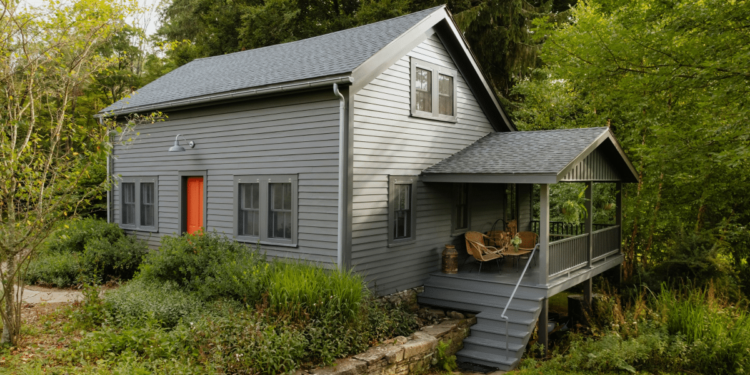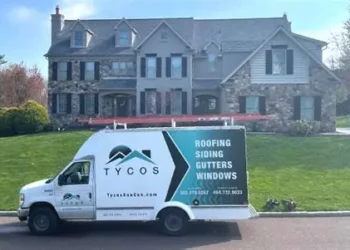New home siding options offer a world of possibilities for homeowners looking to enhance their property's appearance and functionality. From classic materials to innovative trends, this guide delves into the realm of siding choices, shedding light on the benefits and considerations that come with each option.
As we navigate through the diverse landscape of home siding, we uncover insights that can help you make informed decisions for your next renovation project.
. Different materials perform better in certain climates, so it's essential to select a siding option that can withstand the local weather conditions. For example, vinyl siding is popular in areas with moderate climates, while fiber cement siding is more suitable for regions with extreme temperature fluctuations.
Types of New Home Siding Options
When it comes to choosing siding for your new home, there are several options available, each with its own benefits and drawbacks. It's essential to consider factors like durability, maintenance requirements, and cost when making this decision.Vinyl Siding
Vinyl siding is a popular choice for new homes due to its affordability and low maintenance. It comes in a variety of colors and styles, making it versatile for different design preferences. However, vinyl siding may crack or fade over time, and it's not as durable as some other options.Fiber Cement Siding
Fiber cement siding is known for its durability and resistance to fire, insects, and rot. It can mimic the look of wood or stucco but requires less maintenance. However, fiber cement siding can be more expensive upfront compared to other materials.Wood Siding
Wood siding offers a natural and timeless look to new homes. It's environmentally friendly and can be easily painted or stained to match your desired aesthetic. However, wood siding requires regular maintenance, such as staining and sealing, to prevent rot and decay.Brick Siding
Brick siding is a classic and durable option for new homes. It provides excellent insulation, is fire-resistant, and requires minimal maintenance. However, brick siding can be costly to install, and repairs can be challenging if any damage occurs.Metal Siding
Metal siding, such as aluminum or steel, is known for its longevity and resistance to harsh weather conditions. It's also a sustainable option as it can be recycled. However, metal siding may dent easily and can be prone to rust if not properly maintained.Popular Trends in Home Siding
Home siding trends are constantly evolving, reflecting changes in design preferences, technological advancements, and environmental concerns. Let's explore some of the popular trends shaping the world of home siding today.Environmentally Friendly Siding Options
As sustainability becomes a top priority for many homeowners, environmentally friendly siding options are gaining popularity. Materials such as recycled wood, fiber cement, and engineered wood offer durability and eco-friendliness without compromising on aesthetics.Aesthetic Appeal of Different Siding Styles and Colors
- Modern Minimalism: Clean lines, neutral colors, and sleek finishes are in vogue, giving homes a contemporary look.
- Rustic Charm: Weathered wood and earthy tones add character and warmth to traditional and farmhouse-style homes.
- Bold Colors: Vibrant hues like deep blues, forest greens, and rich reds are making a statement, adding personality to exteriors.
Innovative Combinations of Siding Materials
Designers are experimenting with mixing different siding materials to create visually striking facades. Combining stone veneer with vinyl siding, or metal accents with fiber cement panels, can result in unique and eye-catching exteriors that stand out in the neighborhood.Factors to Consider When Choosing Home Siding
When selecting new siding for your home, there are several important factors to keep in mind to ensure you make the right choice. From climate considerations to energy efficiency, each aspect plays a crucial role in determining the best siding material for your specific needs.Climate and Location Impact
The climate and location of your home are key factors to consider when choosing home sidingEnergy Efficiency and Utility Bills
The energy efficiency of your home siding can have a significant impact on your utility bills. Insulated siding options, such as foam-backed vinyl or fiber cement siding, can help improve your home's energy efficiency by providing an extra layer of insulation. This can lead to lower heating and cooling costs throughout the year, making it a smart investment in the long run.Installation Process and Requirements
When considering new home siding options, it's crucial to understand the installation process and any specific requirements for each material. Some siding materials, like vinyl or engineered wood, may be easier to install and require less maintenance over time. On the other hand, fiber cement or natural wood siding may need more specialized installation techniques and regular upkeep to ensure longevity and durability.Maintenance and Upkeep of Home Siding
Proper maintenance of your home siding is crucial to ensure its longevity and keep your home looking its best. By following a maintenance schedule and addressing common issues promptly, you can preserve the appearance and functionality of your siding for years to come.Maintenance Schedule for Different Types of Siding
- Wood Siding: Inspect for rot or mold annually. Clean and reseal every 3-5 years.
- Vinyl Siding: Clean with a mild detergent and water twice a year. Check for cracks or warping.
- Fiber Cement Siding: Inspect for cracks or chips every year. Repaint every 7-15 years.
Common Issues with Home Siding and How to Address Them
- Mold or Mildew: Clean with a mixture of water and bleach. Ensure proper ventilation to prevent regrowth.
- Peeling Paint: Scrape off loose paint, sand the area, and repaint to protect the siding.
- Cracks or Holes: Fill with caulk or putty to prevent water infiltration and further damage.
Tips on Cleaning and Preserving Siding Materials
- Use a soft brush or sponge to avoid scratching the surface.
- Avoid using harsh chemicals or abrasive cleaners that can damage the siding.
- Rinse thoroughly with water after cleaning to remove any residue.
Signs It’s Time to Repair or Replace Home Siding
- Visible Rot or Decay: Indicates structural damage that requires immediate attention.
- Warped or Loose Siding: Can compromise insulation and lead to energy loss.
- Fading or Discoloration: Signifies weathering and age, prompting the need for a refresh.














